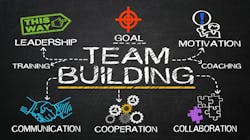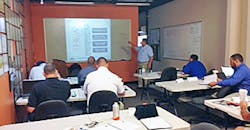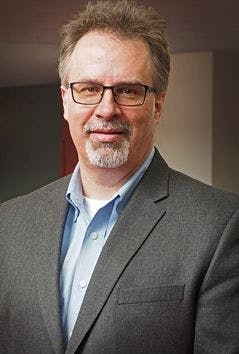This month, I add my voice to David Richardson's here in the HVAC Intelligence Newsletter. My name is Rob Minnick. I have 44 years of experience in the HVAC business with my family and 14 years of teaching contractors how to overcome obstacles and be more successful.
My adventure began in 1980 when I went to work in the modest sheet metal shop of our family HVAC business. This initial period set the foundation for my lifelong dedication to HVAC design. I learned how to perform load calculations, select the right HVAC equipment, design ductwork, and choose the correct registers and grilles.
This interest became center stage for me in 1991 because the impending turn of the millennium would significantly change our approach. We added Home Performance principles into our family company to enhance our service offerings.
Our commitment to continual improvement led us to engage with industry consultants Al Levi and Ellen Rohr in 2009, whose expertise steered our company towards greater operational efficiency and success. Among the initiatives they helped us to achieve was the creation of operation manuals for each position, which led to the opening of our in-house training center.
This training facility became the focal point for developing comprehensive training manuals tailored to various roles within our company. We developed manuals for HVAC and plumbing apprentice technicians to supervisors, comfort advisors, office staff, and home performance auditors.
How to Start Building Your Team
Building and nurturing an HVAC team goes beyond primary recruitment; it is about adopting a continuous learning and growth culture. The foundation of these values lies in selecting individuals who are skilled and keen on mastering the trade.
The first interview should include a clear job description, a detailed overview of the paid training your company provides, a transparent salary ladder, and, most importantly, an outlined path for career advancement.
The journey begins at the start of the interview process. In this conversation, you introduce candidates to their potential roles and a road map for their development. This discussion should include a clear job description, a detailed overview of the paid training your company provides, a transparent salary ladder, and, most importantly, an outlined path for career advancement.
Training is So Important
Creating a positive and learning-oriented work culture is critical. You should cultivate an environment where employees feel valued, supported, and motivated to push the boundaries of their capabilities. Creating an in-house training facility was one of the most exciting efforts, not only for us but also for our employees.
We equipped our training center with all the equipment we install, a complete ductwork system, and adjustable dampers. The setup provided a hands-on learning experience that mirrors real-world scenarios. This training not only enhances technical skills but also instills confidence. My responsibility was to create a deeper understanding of the practical challenges and solutions for my service and installation technicians.
In our company, we found it led to higher employee satisfaction, reduced turnover, and a well-equipped team ready to tackle the systems they encounter in the field.
Our operational training facility positioned the company as a desirable place to work, which helped to attract top talent. It also set a benchmark for professional development and employee engagement.
We developed tailored training modules that allowed us to address specific skills gaps, reinforce our company's standards, and ensure a consistent quality of service across all our offerings.
Not only did it enable us to elevate the competence and confidence of our team, but it also fostered a culture of learning and excellence within the organization.
Our training center became a hub where employees could continuously refine their skills, stay updated on industry trends and technologies, and apply this knowledge directly to their work.
Here are some other lessons we learned in this process:
Effective Communication
Effective communication is a cornerstone for achieving clarity, understanding, and alignment among teams and clients in any successful business. It transcends mere information exchange, impacting operational efficiency and customer satisfaction across various sectors.
A practical approach involves weekly team meetings that blend structure with openness, allowing every member to express their thoughts and concerns. These gatherings serve as a vital platform for synchronizing company and team objectives, addressing challenges, acknowledging accomplishments, and fostering a cohesive and motivated team environment.
Train your field teams to provide comprehensive information to your customers to build trust, set clear expectations, reduce misunderstandings, and bolster relationships.
Clear communication with clients about services, procedures, and expectations is equally crucial. Train your field teams to provide comprehensive information to your customers to build trust, set clear expectations, reduce misunderstandings, and bolster relationships.
Incorporating technology into communication strategies also plays a pivotal role. Leveraging digital tools like customer relationship management (CRM) systems and mobile communication apps ensures that teams stay connected and well-informed, whether in-office or in-field. This is essential for enhancing decision-making and service delivery, ultimately contributing to the business's success and growth.
Take a Good Hard Look At Your Business Needs
For businesses looking to implement similar ideas, start by assessing your team's specific needs and goals. Then, invest in the necessary resources and infrastructure to create a helpful learning environment. Remember, the key is to make training relevant, engaging, and directly applicable to your business.
One notable instance was our early adoption of Home Performance principles, which improved our service quality and efficiency. Similarly, our openness to digital solutions streamlined our operations and improved customer engagement.
Embrace Innovation
Embracing innovation is a must. It requires a mindset that views change not as a threat but an opportunity. We fostered a culture where we encouraged innovative ideas and tried new things, even if it meant facing some failures. Allowing failures helped to propel our business forward and inspired our team to seek improvement continuously.
Remember, for any professional or organization, the path to success is paved with continuous learning, embracing change, and a steadfast commitment to excellence. By adopting these ideas into your company's daily practices, you can shape a future that is profitable and fulfilling.
Rob Minnick is an instructor at National Comfort Institute (NCI). He has 44 years of experience in the HVAC industry with his family's business and 14 years of teaching and training contractors to overcome obstacles and be more successful. He can be reached at ncilink.com/Contact Me.
About the Author
Rob Minnick
Certified HVAC Trainer
National Comfort Institute trainer Rob Minnick is a former HVAC contractor with 43 years of experience in the Heating and Air Conditioning field, particularly with Mechanical Design & Building Performance for owners.
He earned his certifications from the State of Maryland, Air Conditioning Contractors of America, Building Performance Institute, Residential Energy Service Network, United States Green Building Council, and National Comfort Institute.
Rob is active in many associations, including ACCA National Products & QA Committee Chair, ACCA/BPI QEE Standard Development Committee, Building Performance Institute (BPI), Building Performance Association, Building Performance Association National Program Committee, ACHR News Advisory Board, HVACRedu.net Program Oversight Committee, Home Energy Magazine's Editorial Advisory Board, and Maryland Youth Apprenticeship Advisory Committee.


